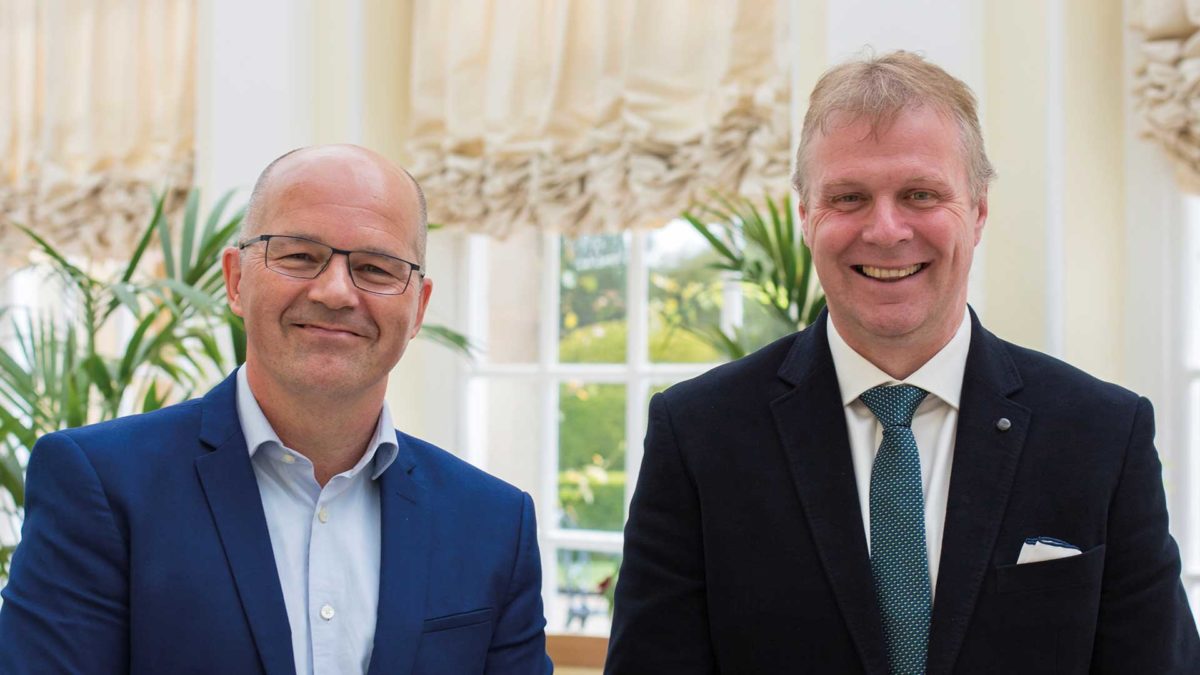
Dominic Hare: Chief Executive of Blenheim Palace
New in the role as Chief Executive at Blenheim Palace, Richard Rosser talks to Dominic Hare about his life prior to Blenheim Palace and what he hopes to bring to the table for the future of this local landmark.
Interviewer: Richard Rosser Transcriber: Poppy Macfarlane Photography: Rob Scotcher
Dominic: I first arrived at Blenheim Palace back in 2003 and I was the first recruit of my predecessor, John Hoy. I arrived about three months after he arrived, so I’ve served as Finance Director here from 2003 through to the end of 2016 as part of a successful and stable team, and I was delighted to be offered the opportunity to step into his fairly sizable shoes in January 2017. Prior to that I trained as a chartered accountant with KPMG up in Liverpool. I then specialised in corporate finance and worked with two different investment banks from 1997 to about 2003. The highlights of that time included deals to help Bob the Builder help buy Barney the Purple Dinosaur and Thomas the Tank Engine.
These were happy times but my children had reached an age and I had reached a point where I really wanted to set down roots closer to home, so the Blenheim Palace opportunity which is so synonymous with all that’s great about Oxford was the perfect place for me to land, and I’ve been very happy here.
Richard: There have been lots of changes at Blenheim over the years, since you started, and lots of events come here and stay here and become successful here. What plans have you got for the future?
Dominic: Big expansive plans. The first thing I always stress is the period that John and I were working together here was enormously successful so while we are changing many things, that’s in no way a disavowal of the past. We reflected a lot on what the relevance of a landed estate was today and we reached a conclusion that historic, landed estates were actually pretty unique things; we combine elements of commercial enterprise with elements of public sector, with elements of charity.
As a commercial enterprise, we deploy capital in pursuit of profit, and we regard that as a healthy thing and we do it well. Like many public sector bodies and local governments, we are completely grounded in this local area. We own so much of this area and we have so many people in the community who work for us, we could never walk away. If you combine those two elements that gives us the almost unique ability to invest into this local area, knowing we can wait for the very long term for the returns. As a charity with the support of the Duke and trustees we can support purely charitable objectives and hand over money for good causes and I’m delighted to say we’ve established a practice of doing that in significant sums. These things all come back to the same idea of all the different ways we can enhance this area and make life better here.
Having reflected on that uniqueness we decided we were happy in our own skin, comfortable doing what we could and we set out a bold vision to be the life-blood of the local economy, to enhance the lives of local people and to share and protect this extraordinary place. We translated those big words into ten specific goals for the next ten years:
1. Triple our economic contribution to the local area.
2. Train more than 100 apprentices in a broad range of skills, from shepherding to marketing.
3. Build 300 high quality and truly affordable homes for local people. We think the accommodation market in Oxfordshire is incredibly expensive and even “affordable accommodation” simply isn’t affordable. We’re determined to completely transform that landscape.
4. Achieve annual visitor numbers in excess of 750,000 paying visitors. (that’ll be about 1.2m total visitors).
5. Become a net generator of green energy. We currently generate about 15% of the energy we consume but we’re determined to rapidly move that to more than 100%.
6. Become one of the country’s top 100 employers. In some ways, this is the most important goal of all because if we can’t earn the right to employ great staff and allow them to express themselves in the business then we’ll never achieve any of our broader goals.
7. Complete more than £40 million of restoration work. We think this is the biggest restoration programme ever attempted in Europe.
8. Reacquire key works from old collections and bring them back to Blenheim.
9. Secure an endowment of £45 million to protect this world heritage site forever. This is to ensure no future Duke ever has to worry about the money to keep the roof on. This sounds self-serving, but the palace is such a large economic pillar for the area and we’re trying to guarantee the economic vitality of this area and the employment scene going forward.
10. Double our charitable contribution to the community.
This set of goals covers all of our businesses but they all point back to the initial vision – That we want to be the economic life-blood of the area, enhance the lives of local people and share and protect this extraordinary place.
Richard: Do you now see yourself as leader? And as leader what are your three secrets of successful leadership?
Dominic: There’s part of me that still feels like an imposter. When you’re surrounded by incredibly talented people, it’s difficult not to start to feel something of an inferiority complex. When I accepted the job offer to become CEO, I gave it three days hard thought because I wasn’t totally convinced I was the right person for our trustees. I wrote them a note which said something like “I’m not John, John was a wonderful ambassador an operational leader, I’m more of a back-office geek and I will probably try to do things that way”. I quickly learnt as a leader you can’t do that and you do have to stand up front, you do have to be an ambassador and if you don’t then I think people are a little bit suspicious.
Richard: What are your three main tips?
Dominic: 1. Start with “why”, to coin a phrase from a very well-known book. We spent a lot of time self-diagnosing and imagining what the future of this estate might be and what could be important about it. Once you’ve articulated a very clear explanation of why you’re going to do something, then we found people really rally behind you, both inside and outside the organisation. Then the big decisions you make about how you go about it become much easier because everyone’s on the same page.
2. Listening and reflection. Despite the fact I have to talk a lot I still put listening and reflection down as one of the most important attributes. We are surrounded by immensely talented people, especially in a place like Blenheim where people care very deeply about the organisation and its community, and I’ve discovered over even six or seven months a lot of the answers to the questions I have about where we go and how we do it are in the heads of people around me here. So, if I can listen to what people are saying and reflect on it then I probably won’t go far wrong.
3. The power of well-crafted communication. I quickly discovered how important it was to people around me that I stand up and articulate a very compelling case and get people excited and be a bit of a salesman too. We do quarterly presentations to all the teams here and I’ll speak for nearly an hour to each team. If they knew just how long I rehearsed those presentations, how often I replayed the words and the pauses in my head, to make sure each team knows their presentation is my most important one, I think they’d all laugh at how long that process takes. I’ve realised just how rewarding that is and how much value you get back when people see you’re going to make an effort.
Richard: Thank you for your time and wisdom, Dominic. B4 wishes you the best of luck for the future.
More in Attractions
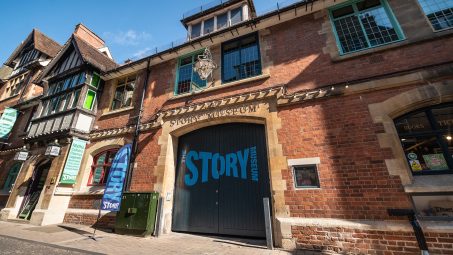
The Story Museum: Bringing Stories to Life in Magical Ways
The Story Museum is no ordinary museum. Nestled in the heart of Oxford, this unique, immersive space is dedicated to celebrating the power of storytelling in all its forms. Whether through interactive exhibitions, live performances, or creative workshops, The Story Museum is on a mission to enrich lives—especially young lives—through the magic of stories.

HENLEY FESTIVAL 2024 UNVEILS PIONEERING VISUAL ARTS SHOWCASE
10 – 14 July 2024 | henley-festival.co.uk | #HenleyFestival | @henleyfestival
Henley Festival Presented by Westcoast – the UK’s only boutique black-tie festival – is delighted to reveal this year’s dazzling visual arts programme, featuring one of Britain’s best-selling figurative painters Mark Demsteader, the Doug Moran National Portrait Prize and Archibald People’s Choice Award-winning artist Esther Erlich, and sculptor Holly Bendall, who creates striking bronzes including a Greenpeace-supported permanent public installation that can be experienced in Porthleven.
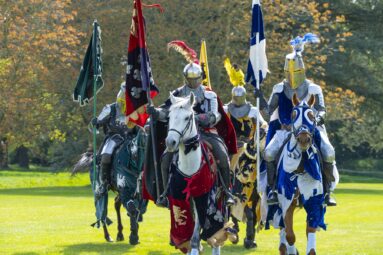
Blenheim Palace announces annual Jousting Tournament dates
This spring, step back in time at Blenheim Palace as the UNESCO World Heritage Site transforms into an action-packed battlefield for its annual Jousting Tournament.
From this author
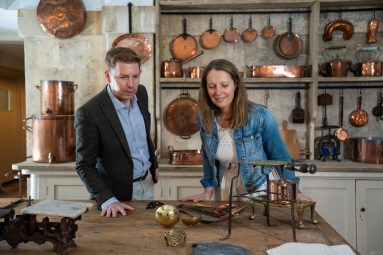
Experience ‘Life Below Stairs’ at Blenheim Palace: all-new visitor experience unveiled
From 29th March, step into history as Blenheim Palace unveils ‘Life Below Stairs’ – a groundbreaking new visitor experience that brings the hidden world of Victorian service to life like never before. The experience is set within some of the original working kitchens, open to visitors for the very first time.

Christmas and 2026 group bookings announced at Blenheim Palace with trade pricing...
Blenheim Palace is delighted to announce the highly-anticipated theme of Christmas at Blenheim for 2025 – Palace of Oz where groups can enjoy an enchanting festive experience with exclusive trade pricing.
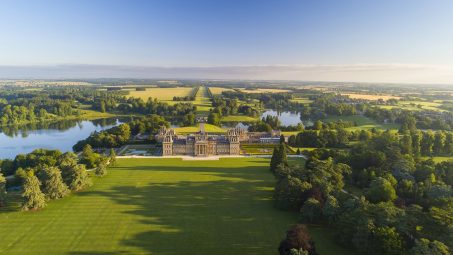
Britain’s Greatest Palace like you’ve never seen it before: Blenheim Palace announces...
Blenheim Palace has announced a series of once-in-a-lifetime views and visitor experiences which will only be available for a limited time due to the launch of its most ambitious restoration project to date.

